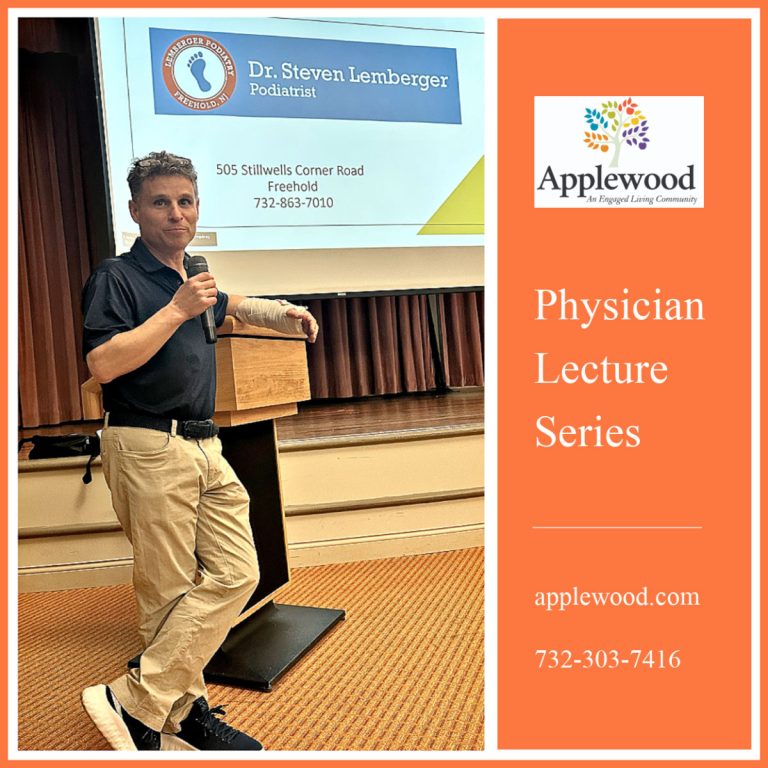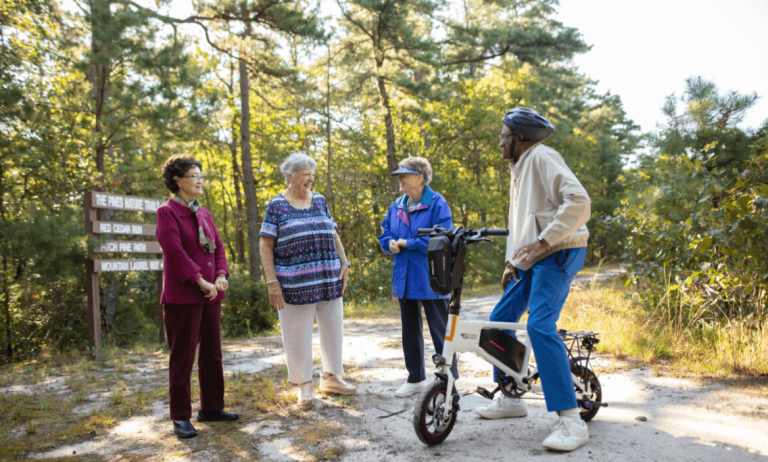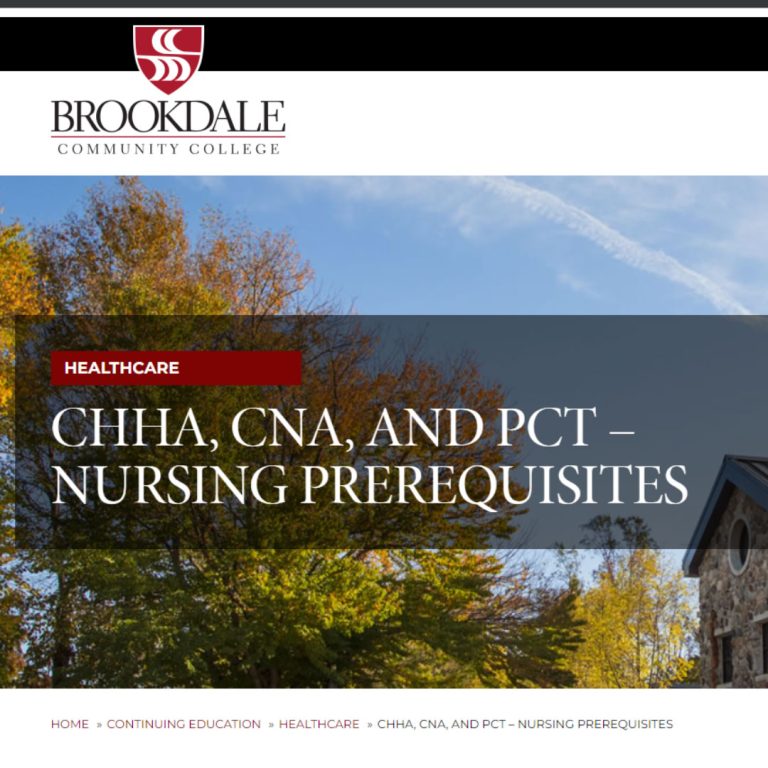
As part of Applewood’s Physician Lecture Series, Freehold podiatrist Dr. Steven Lemberger recently presented tips, tools and treatment options to help residents maintain senior foot health.
Strong and healthy feet are the main support system for keeping you upright and moving. Consider this—the body has 206 bones and 52 of those bones are in our feet. During aging and after years of daily standing, walking and running, many seniors develop foot disorders, which can be painful and debilitating.
“Proper foot care can help prevent injury, falls and serious complications from chronic diseases like diabetes,” explains Dr. Lemberger. “With a little daily attention, you can help avoid unnecessary pain and debilitation from foot ailments.”
Dr. Lemberger presented an overview of common senior foot ailments and how they can be treated and avoided to more than 60 Applewood residents last month:
Common senior foot disorders
Corns and calluses
Corns and calluses are thick, hardened layers of skin around sensitive feet areas under continuous pressure. They’re most commonly caused by ill-fitting footwear, but can also be caused by improper walking gait.
Toenail disorders
Toenail problems can take on a variety of forms and be very painful. Some of the most common toenail disorders in the elderly are fungal infections or ingrown toenails.
Bunions, hammertoe and claw toe
These painful deformities occur when a toe becomes bent out of shape or grows excess bone. Some types of foot deformities, such as high heels, are associated with specific footwear.
Loss of fat pads
Everyone is born with fat pads that cushion the bottoms of their feet. As you age, you can lose these fat pads, which results in painful force applied to unprotected areas of the feet.
Connective tissue disorders
Connective tissues consist of cartilage, bone, tendons, muscles and ligaments. When the connective tissues in the feet become irritated or inflamed, it can lead to painful conditions such as foot tendonitis or plantar fasciitis.
Diabetes/Neuropathy
Diabetes can cause damaged nerves called diabetic neuropathy and reduced blood flow and circulation in the legs and feet in older people, leading to chronic foot disorders, including non-healing wounds, gangrene or severe infections.
Seven steps to maintain healthy senior feet
Dr. Lemberger offered seven specific steps residents can take to protect the health and strength of their feet:
- Wear clean, comfortable and well-fitting shoes and have a spare pair on hand.
- Keep feet clean, dry and moisturized daily.
- Trim toenails straight across to avoid ingrown nails.
- Inspect feet regularly for any cuts, sores, changes in color or temperature.
- Stay physically active to improve circulation in the feet.
- Don’t risk injury by going barefoot.
- Schedule an annual foot screening with a podiatrist to diagnose any potential issues early on before they become more problematic.
The loss of healthy feet can quickly take a toll on overall health and wellness, threatening our balance and mobility. Taking simple precautions and staying up-to-date with healthcare screenings can preserve your holistic health and help pave your way to many healthy steps ahead.
____________________________________________________________________
Learn more about Applewood’s Engaged Living™ lifestyle, including educational segments on mental, physical and emotional senior health.




